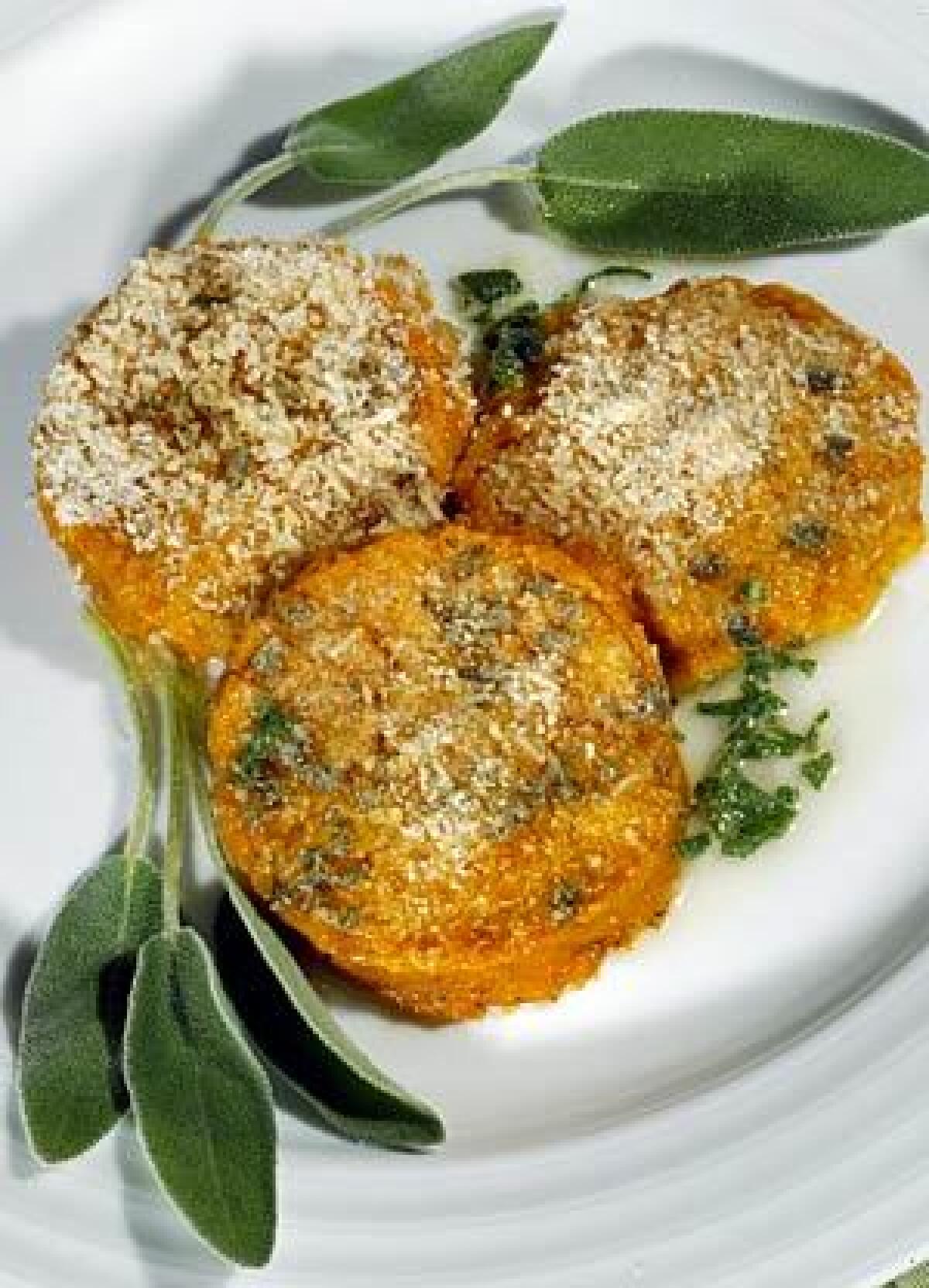Rhapsody in green

Over lunch the other day a friend mentioned how hard it is to plan a menu for a dinner party anymore with all the food scares and scary diets loose in the land. “You can’t serve salmon, you can’t serve beef, you can’t serve pasta,” she said. “Rabbit is about the only thing that’s acceptable.”
Not being a fan of chicken of the prairie, I immediately thought of at least 50 other things that are still OK to dish out: vegetables.
Except for the odd killer scallions, most items in the produce aisle have not been indicted by anyone more threatening than the protein promoters. And aside from potatoes, vegetables have never seemed more universally alluring as an entree than in this time of mad cows and funky fish.
The trick is how to put them together to produce something that will rival a roast, or a side of salmon, or even a braised bunny. A whole steamed cauliflower, even with the richest hollandaise or cheese sauce, is just not going to cut it.
I’m generally skeptical of emulating name chefs at home, but this is one situation where it makes sense. Some of the best big thinkers, such as Charlie Trotter in this country and Pierre Gagnaire in Paris and London, always offer an all-vegetable tasting menu as an alternative to the usual foie gras-to-veal lineup. And usually it surpasses the carnivores’ special. Anyone can grill a duck breast. It takes talent and imagination to turn peas and herbs into the centerpiece of a $100 dinner.
Chefs make it work by serving their vegetable creations as small plates, in consecutive courses. The best of them understand implicitly that a meatless, fishless meal can’t climax with a garden-variety cousin of a haunch, some tricked-up imitation of flesh like those ‘70s grain-and-walnut “meatloaves.” A series of little vegetable dishes, carefully thought out and artfully presented, has more impact than one grand slam, and no one would ever think to ask where the beef is.
Courses are what set high-end vegetable meals apart from those at every midrange cafe, where unimaginative cooks tend to rely too heavily on eggplant and portabello mushrooms to get them through the entrees. Both those vegetables are seriously good meat substitutes, but there are only so many ways you can combine either of them with goat cheese before a stultifying sameness sets in.
(Unimaginative chefs also reflexively reach for pasta when someone rejects their osso buco. To me that’s cheating. Pasta should be one course among many in a real Italian meal. It’s no substitute for branzino.)
Serving in courses not only has dramatic impact, it also opens up more room to play with seasonal ingredients that would be relegated to side dishes on a mainstream menu. Right now the markets are full of enticements such as leeks and parsnips and squash that can be elevated to entrees, or at least to one course among several. The same broccoli puree that looks like baby food simply spooned alongside lamb is irresistible if it’s converted into a souffle or a timbale to fill in for chicken.
Jerusalem artichokes are an even better example. Too often they get pushed around like so many Brussels sprouts when served next to meat or fish. Grate them, mix them with red peppers and fry them, though, and you get a stand-alone first course. The distinctive, almost nutty flavor comes through in fritters as it never does in competition with protein.
Winter squash is another big source of vegetable inspiration. You can stuff the small ones with rice and olives, or bake and puree the big ones to turn into a creamy soup, or dice chunks of either into a risotto with garlic and thyme.
But gnocchi are more unexpected.
The kind I like are not the little doughy gumballs you get in far too many Italian restaurants. In fact, they’re not even shaped like what we normally think of as gnocchi. Roman gnocchi are biscuit-like rounds about the size of thick slices of French sausage. Made from semolina that’s simmered like polenta with milk, they’re then patted out like dough, cut out and baked, with a scattering of fresh sage and a drizzle of butter. Plain semolina is traditional, but a dark, dry-flesh squash like kabocha or buttercup gives these gnocchi color and depth, almost like meat. You could serve them as an entree all on their own, but as part of a parade of little dishes they stand out even more.
When it’s good to be flaky
Vegetables baked in pastry are probably the most seductive: There’s a reason quiche dominated menus for decades before wraps came along. Empanadas, tarts and calzoni are all great showcases for everything from asparagus to zucchini. But filo dough has a power no other pastry does, both from its flakiness and from the butter it needs to be pliable. I’ve never gone wrong serving a vegetable strudel as one course of a meal where everyone might be expecting a veal roast.
Just about any vegetable can be rolled inside the crisp dough, but mushrooms and leeks have an unparalleled meatiness, especially when supplemented with a lot of Gruyere.
My take on all-vegetable menus always errs on the side of butter, which means a salad is essential as one course. To fit the theme, it has to be composed; to counter the richness, it needs an element of bitterness. And so a favorite is that timeless combination of pears, arugula and blue cheese, freshened up with toasted macadamias and a dressing of lemon, macadamia nut oil and lots of pungent chives. I figure you can get away with a classic when everything else is unexpected. But you can still tweak it, substituting Manchego or shaved pecorino for Maytag blue, say, or mizuna or frisee for arugula.
All these recipes use cheese or eggs for flavor and body, which only goes to prove you can’t please everyone. Or at least I can’t. Vegans will still be left out. And I have no sympathy for carb-phobes. But you can persuade even a pork lover to give up meat, if fleetingly, by swiping another page from the top chefs’ playbook. Their secret for turning vegetables into dinner? Never use the word “vegetarian.”
More to Read
Eat your way across L.A.
Get our weekly Tasting Notes newsletter for reviews, news and more.
You may occasionally receive promotional content from the Los Angeles Times.










